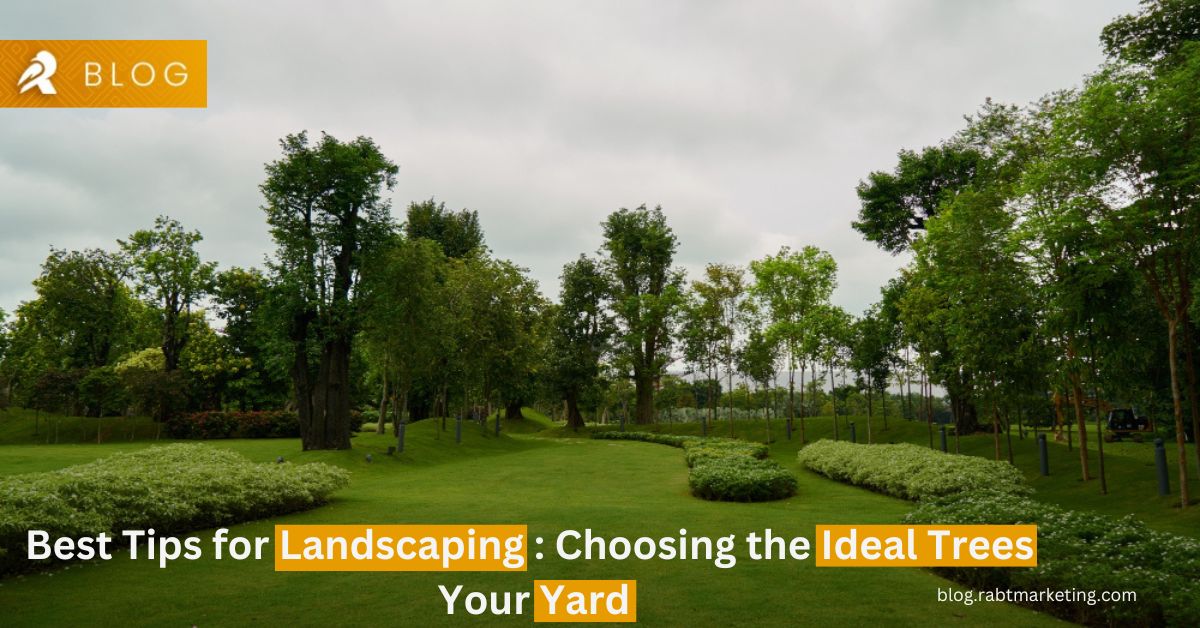Landscaping is a wonderful way to beautify your home and give it a stunning look. When choosing trees for your garden, it’s highly essential to reflect on why you want to include them in your design and what you should not include. Additionally, consider how the trees will fit with your home’s existing size, color, and style, as well as the environmental conditions of your outdoor space.
Selecting the Ideal Trees for Your Garden

When it comes to selecting the perfect tree for your garden, there are many factors to consider. Understanding the purpose behind your tree choice is the first step of this process.. Evergreen trees and shrubs offer year-round greenery, can maintain good vibes in your garden and attract your guests and visistors. On the other hand, deciduous trees and shrubs shed their leaves seasonally, This will consequently affect your garden greenery and result in a less colorful landscape during the colder months.
Understanding Your Tree’s Purpose
Trees contribute more to your landscape than just visual appeal. Depending on the species, they can:
- Enhance your garden’s beauty
- Improve air quality by filtering pollutants
- Reduce noise levels
- Shield your home from wind
- Provide shade to cool your home
- Create inviting outdoor spaces
- Block unsightly views
- Increase property value
- Minimize glare from surrounding structures
- Reduce rainfall runoff
Choosing the Right Size and Shape
The size and shape of a tree sign depends suitability for a particular location. For instance, compact trees with low branches are ideal for areas near power lines, whereas taller trees are excellent for creating privacy. The breadth of a tree’s canopy affects how much shade it provides and can limit its placement, especially in smaller or narrow yards.
Typically, mature trees with longer lifespans offer greater value than younger, fast-growing varieties. Fast-growing trees might meet immediate landscaping needs but may require replacement in the future. Consider the tree’s mature size and growth rate when deciding its role in your garden design:
- Shorter trees highlight your home’s beauty without overpowering it.
- Taller trees enhance privacy while still allowing sunlight to reach your home.
Choosing the Best Planting Location
Evaluate the soil and sunlight requirements of any tree you plan to plant. For example, the Western Hackberry thrives in drier climates like Albuquerque. Proper site conditions are vital for a tree’s health, growth, and longevity, reducing maintenance needs. Consulting a local arborist can help you choose an optimal planting spot.
Consider these factors when selecting a planting site:
- Hardiness zone
- Soil conditions
- Drainage
- Sunlight exposure
- Wind exposure
- Space constraints above and below ground
- Potential for pest infestations
The Importance of Mulching
Preparing your trees for summer’s drought conditions is also a necessary step. A thick layer of wood chip mulch, extending to the edges of the tree’s branches, can help soil retain moisture and regulate temperature. This simple step also minimizes cleanup by allowing leaves and seeds to decompose naturally. Mulch is available from commercial sources and local tree care companies.
Fertilizing for Growth
Fertilizing your trees and plants at the beginning of summer prepares them for the heat. Using custom fertilizers from trusted sources can ensure your garden thrives throughout the season.
Ideal Tree Characteristics
Even if you’re not an arborist, you can select great trees by looking for these qualities:
- A sturdy trunk
- Firmly attached branches
- Balanced branch spacing
- Absence of tangled growth
- A robust root system within an appropriate-sized container
- No signs of disease or damage
Managing Tree Roots
Tree roots, especially near hardscapes like sidewalks and patios, require careful management. Root Barriers are an effective solution for controlling root growth without harming the tree. They guide roots downward and away from structures, preserving both the tree’s health and your landscape.
Inspecting Existing Trees
Summer is a good time to assess and analyze the condition of your trees. You can look for cracks, damage, missing bark, mold, discoloration, or pests. If you spot any issues, consult a certified arborist for a treatment plan.
Tailoring Your Treescape
Maintenance of the garden is more important than its creation. Your ideal garden involves a deep knowledge of your trees’ needs. You must have to read books or watch YouTube content for this purpose. Also, you can consult any Certified Arborist to evaluate your trees and ensure proper care. Remember, improper pruning can lead to future problems. Structural supports can also strengthen weak points in trees.
Judging Tree Qualities
Choosing the right tree goes beyond finding a healthy specimen. Consider whether a tree’s maintenance needs align with your preferences. Some trees may drop debris that requires regular cleanup. Keep these factors in mind before making your purchase:
- Ornamental trees often need more maintenance due to fallen blossoms and fruit.
- Shade trees can outgrow their original location.
- Conifers provide consistent growth and year-round greenery.
Read More:- 6 Must-Have Items to Beautify Your Home’s Interior Design
Better Tree Placement
Feng shui is an ancient Chinese art of arranging buildings, objects, and space in an environment to achieve harmony and balance. Feng shui is an innovative and unique chinese concept that says tree placement can influence the flow of energy around your home. Consider these tips for aligning tree placement with some principles effecting your life in positive or negative way. These are known as feng shui principles:
- Plant trees behind your home for support and balance.
- Position trees along both sides of your house to maintain harmony.
- Use trees to block negative energy sources.
- Avoid planting in the center of the yard to prevent financial stress.
- Ensure trees do not touch the house to avoid negative energy.
- Remove dead growth promptly to prevent energy drain.
Different tree species offer varying benefits based on their placement. For example:
- Pine trees in the East bring long life
- Lime and Orange trees in the can increase financial success.
- Peach trees in the West improve personal relationships.
- Apple and Pomegranate trees in the Southwest promote love and happiness.
Choosing the right tree involves careful consideration, as many species can outlive their planters. Knowledge-based correct planting decisions can glorify your landscape, giving you a sense of internal satisfaction.

